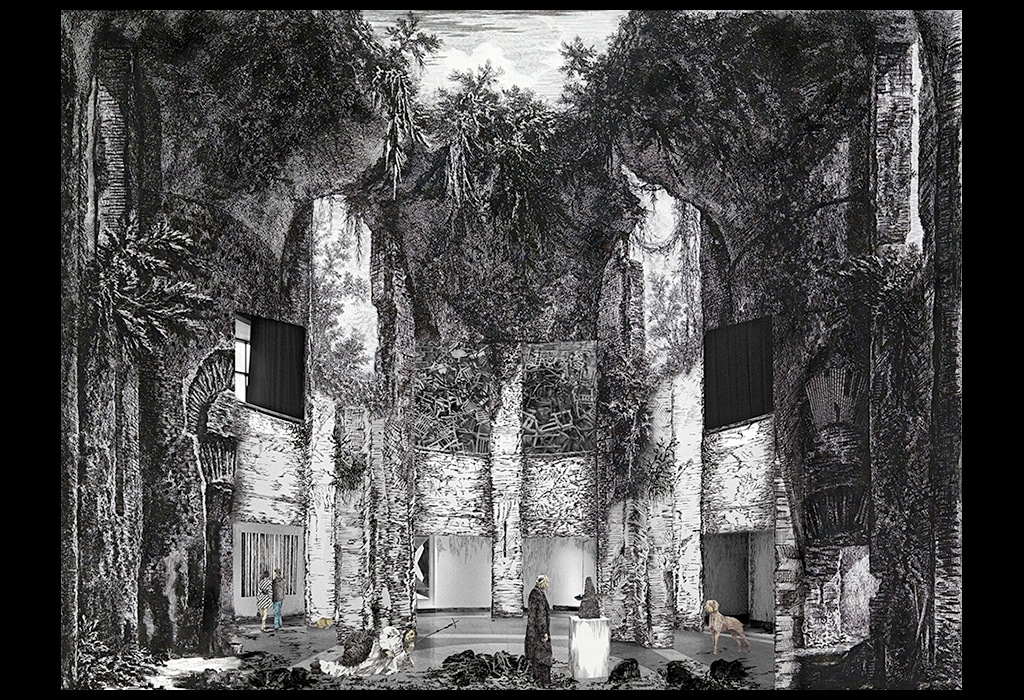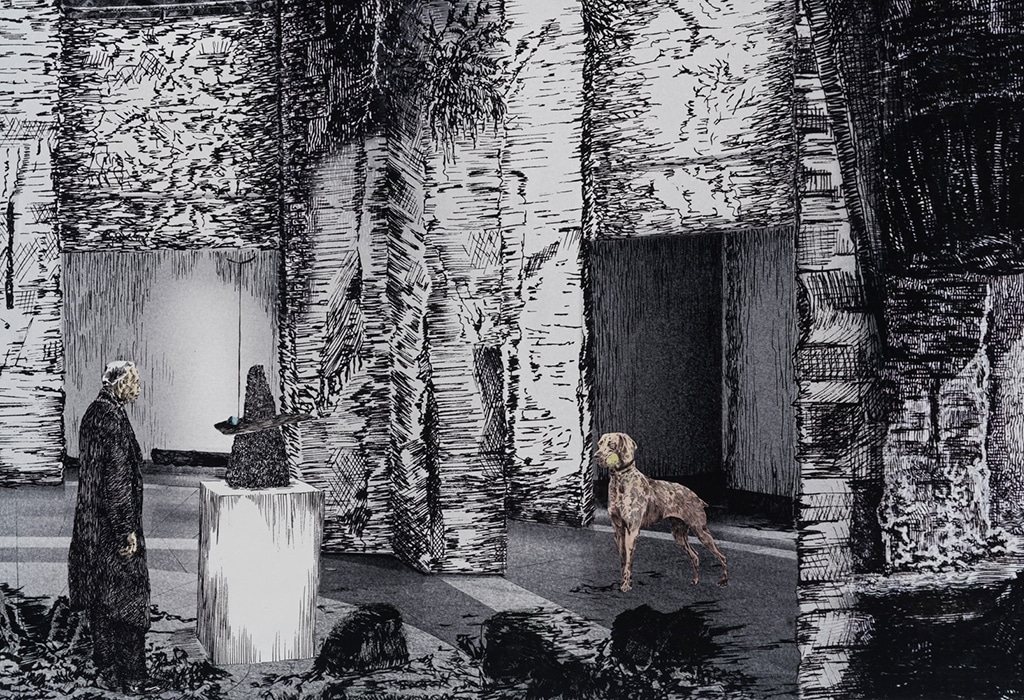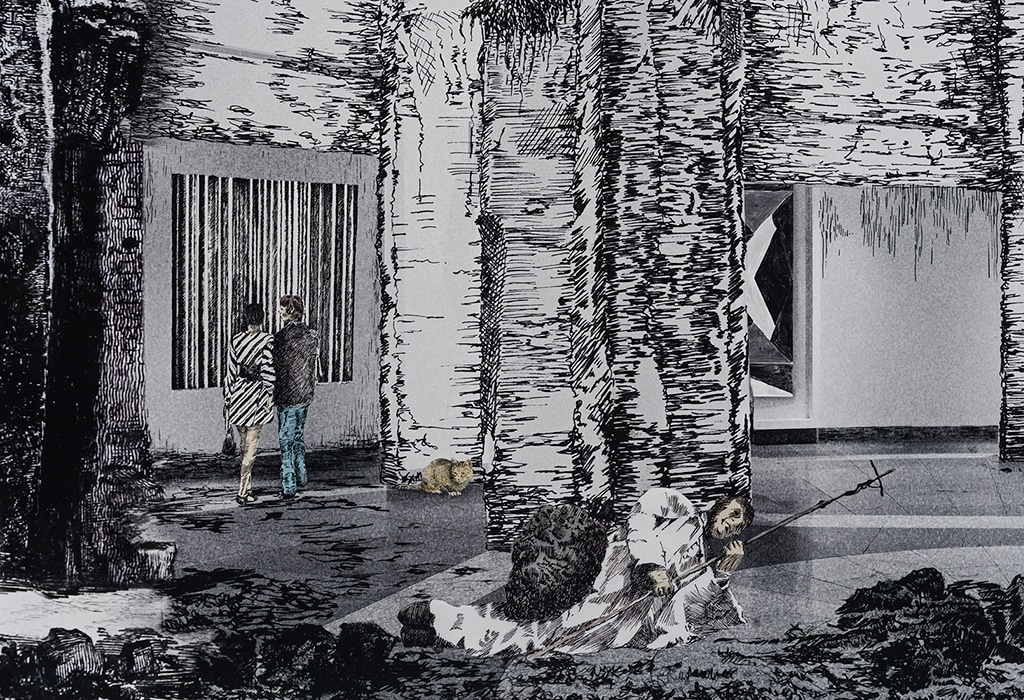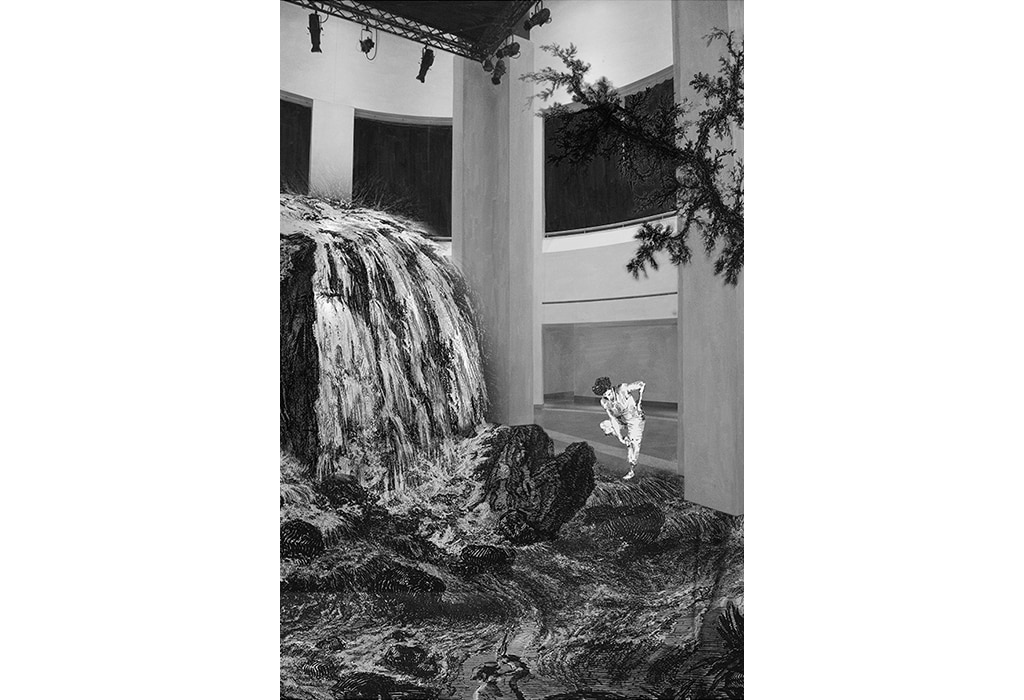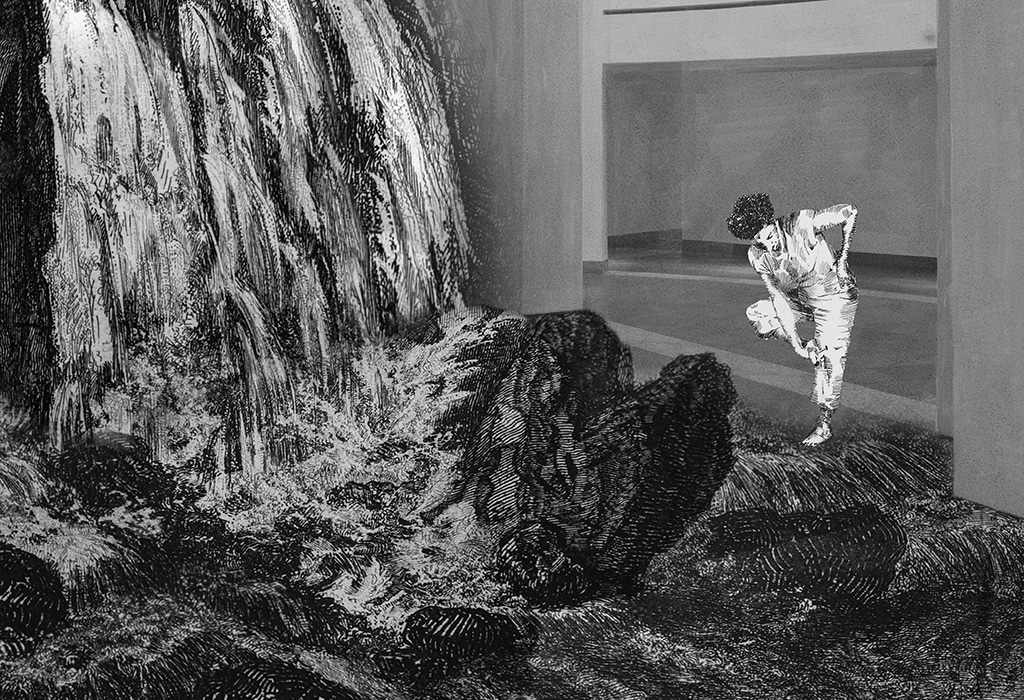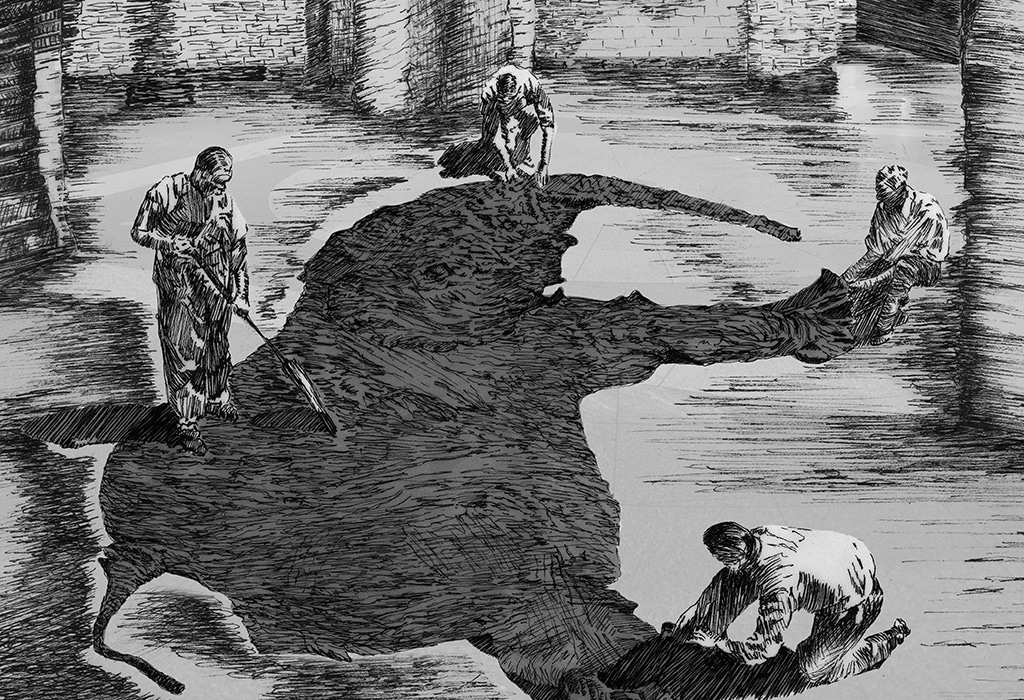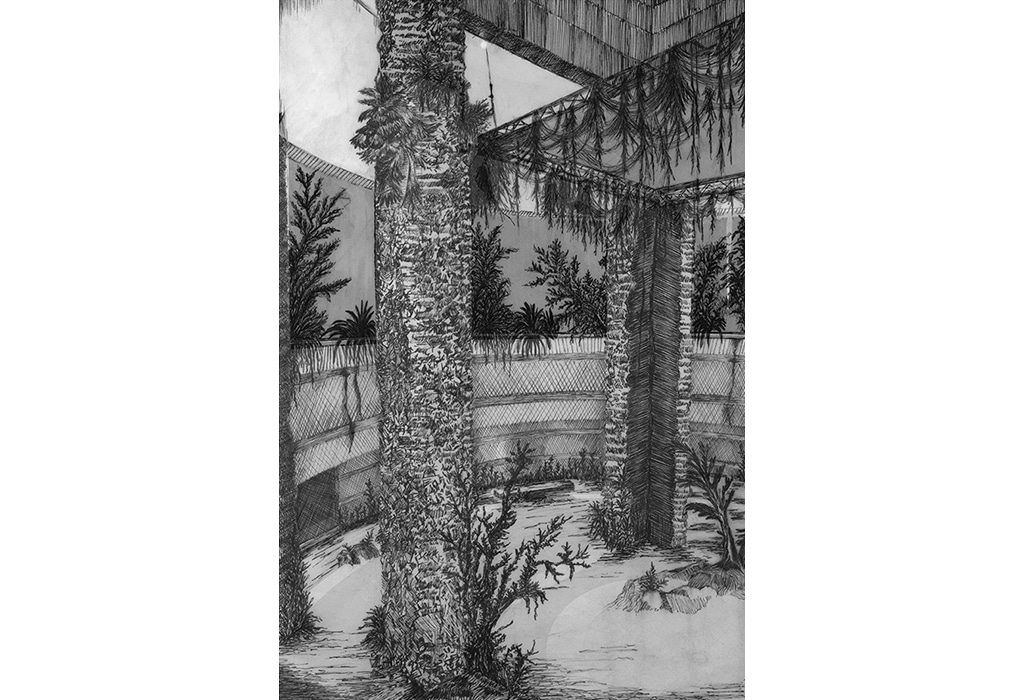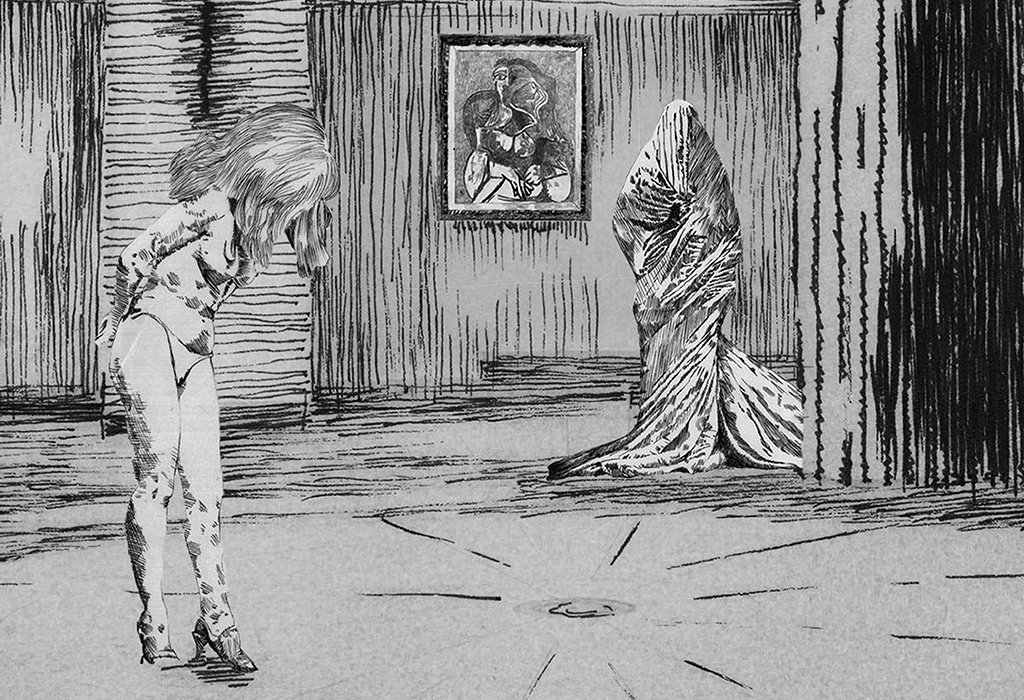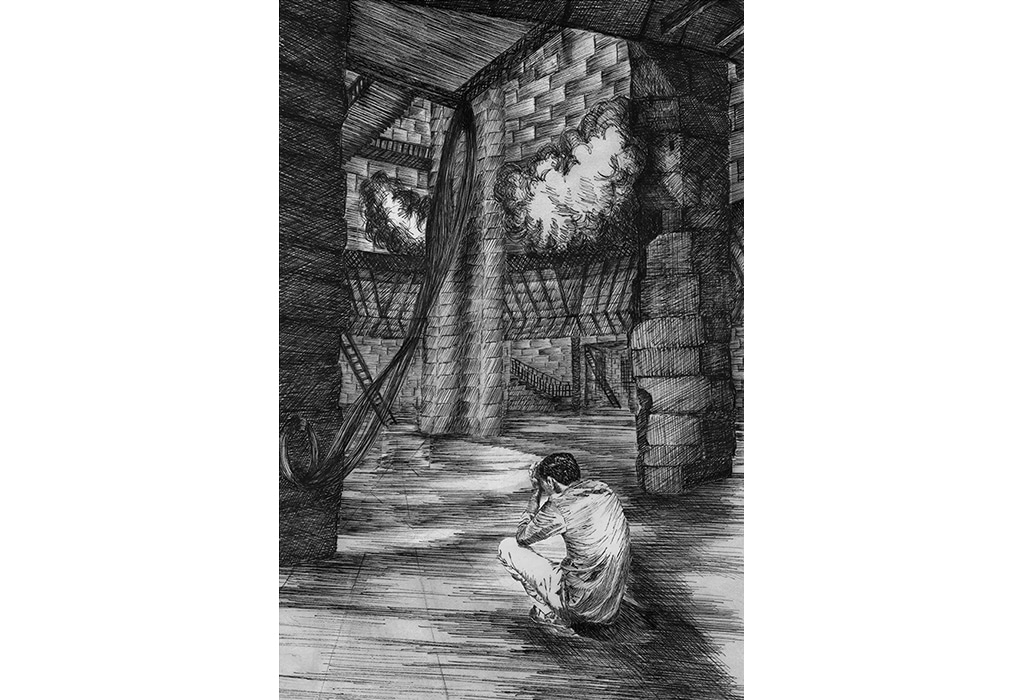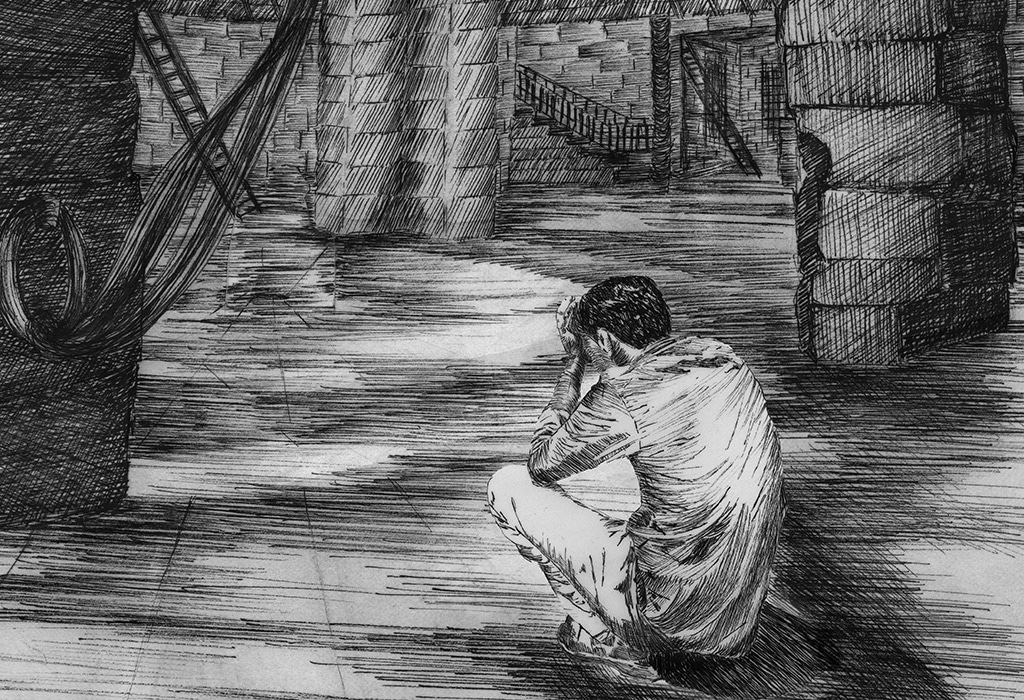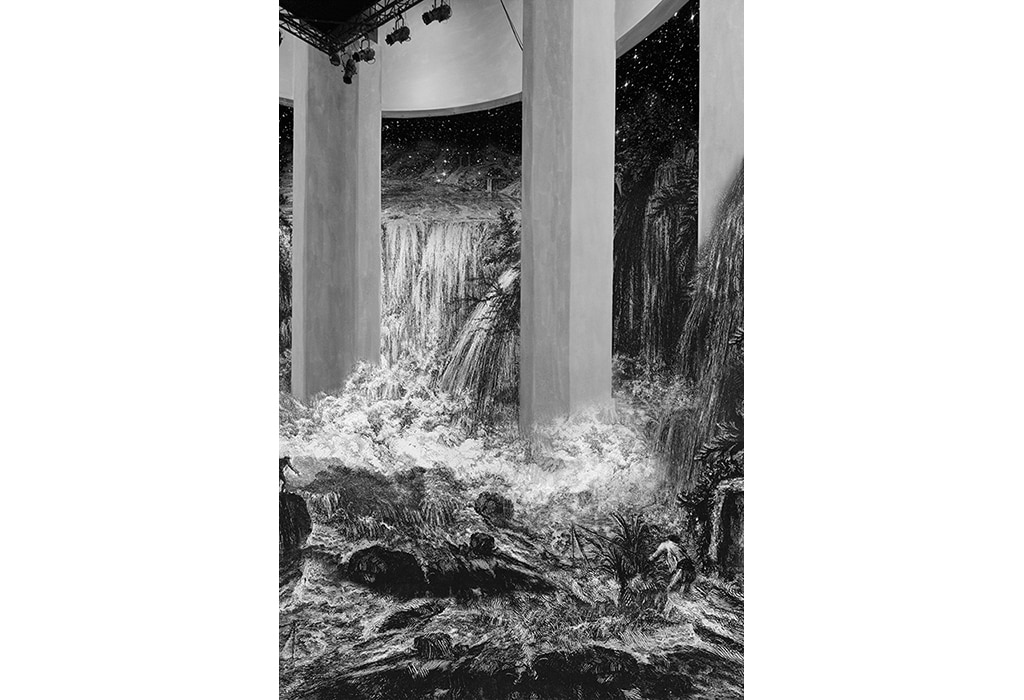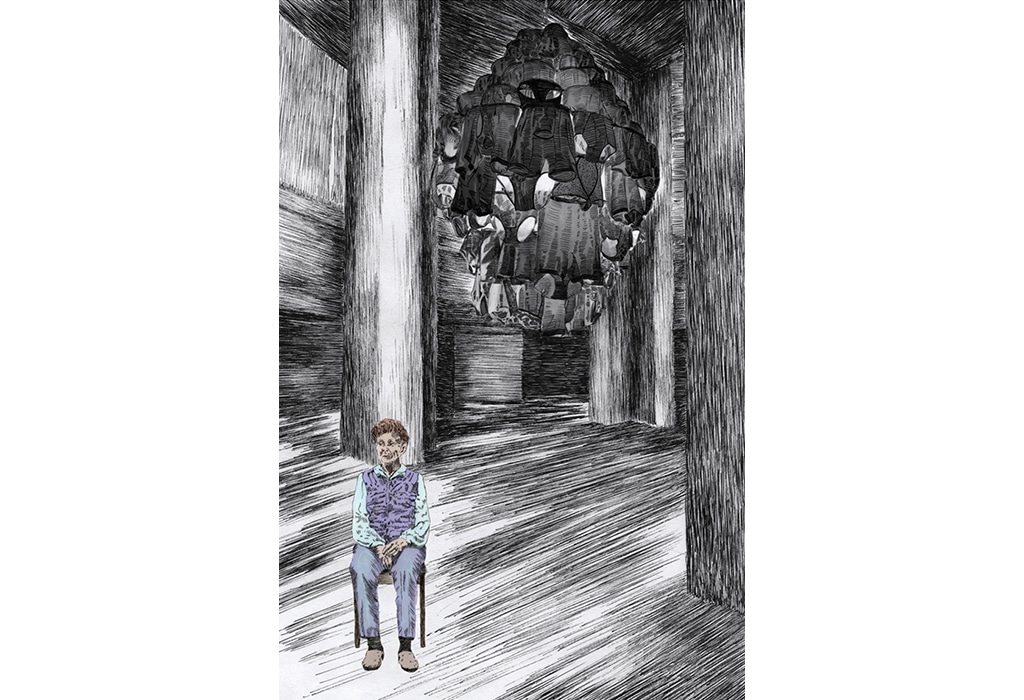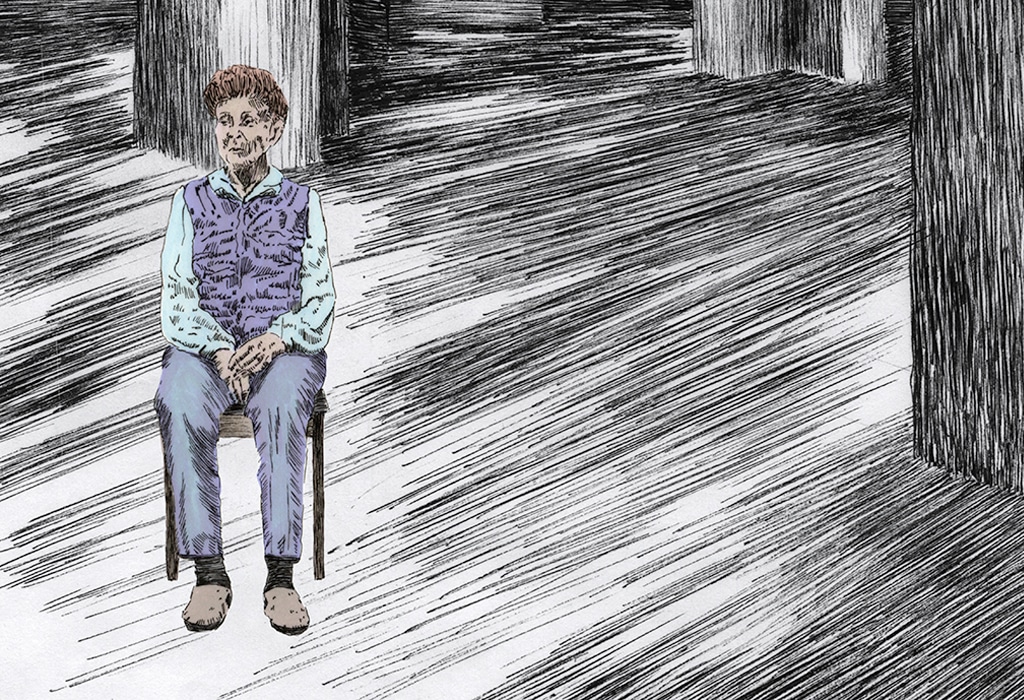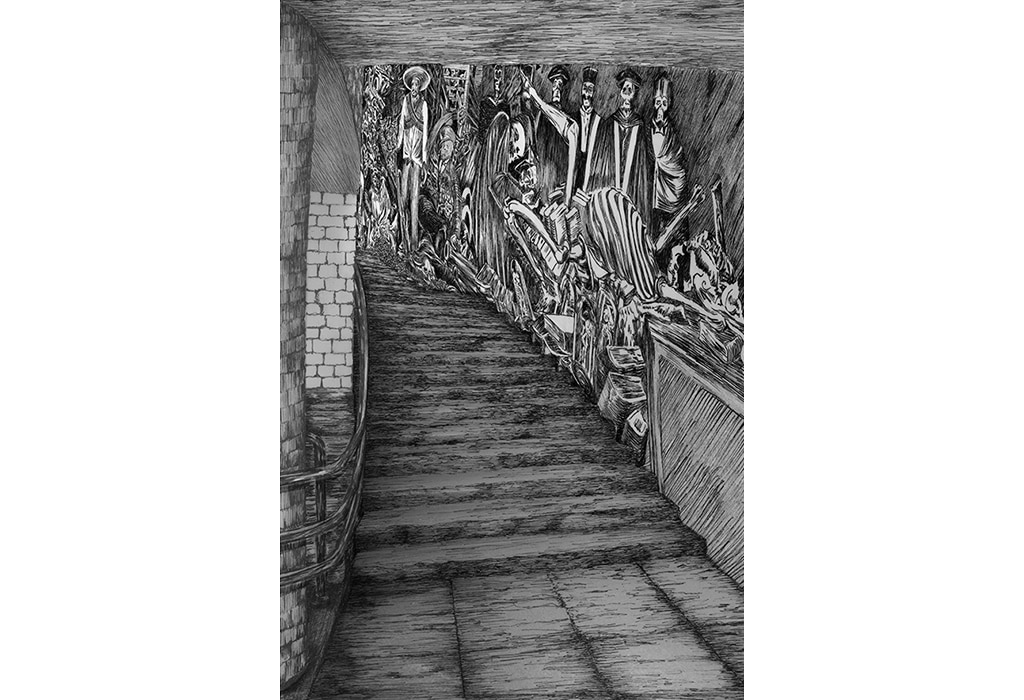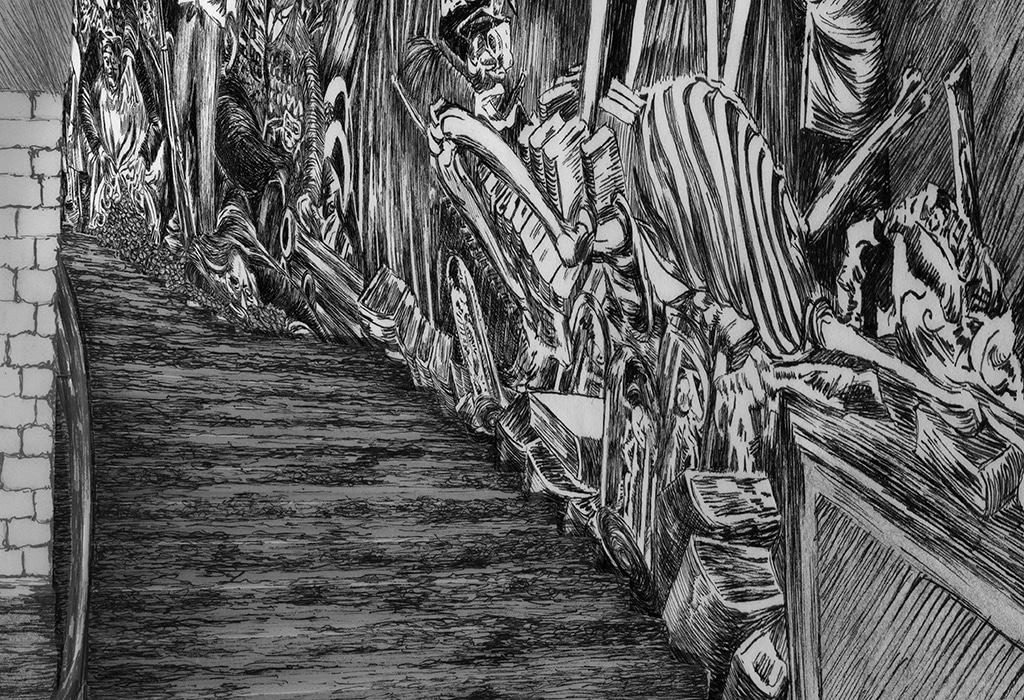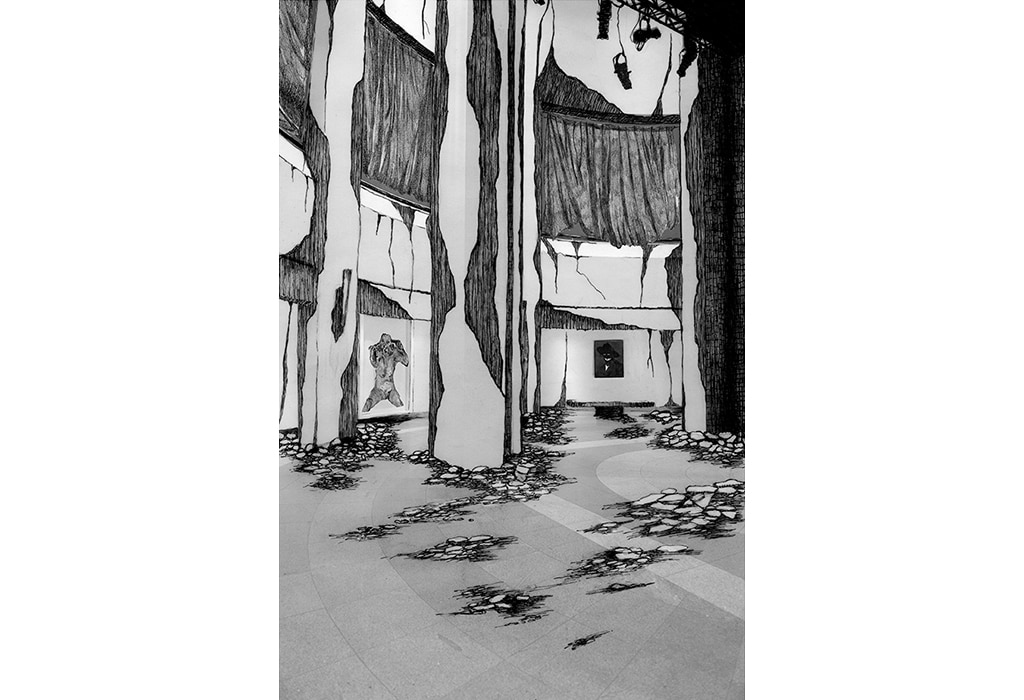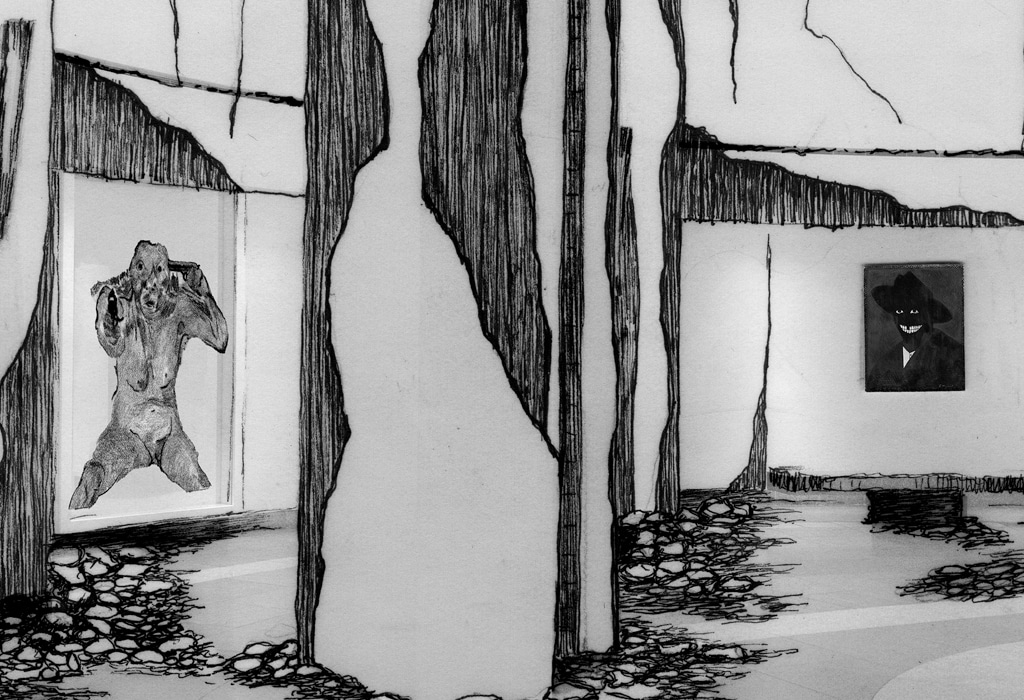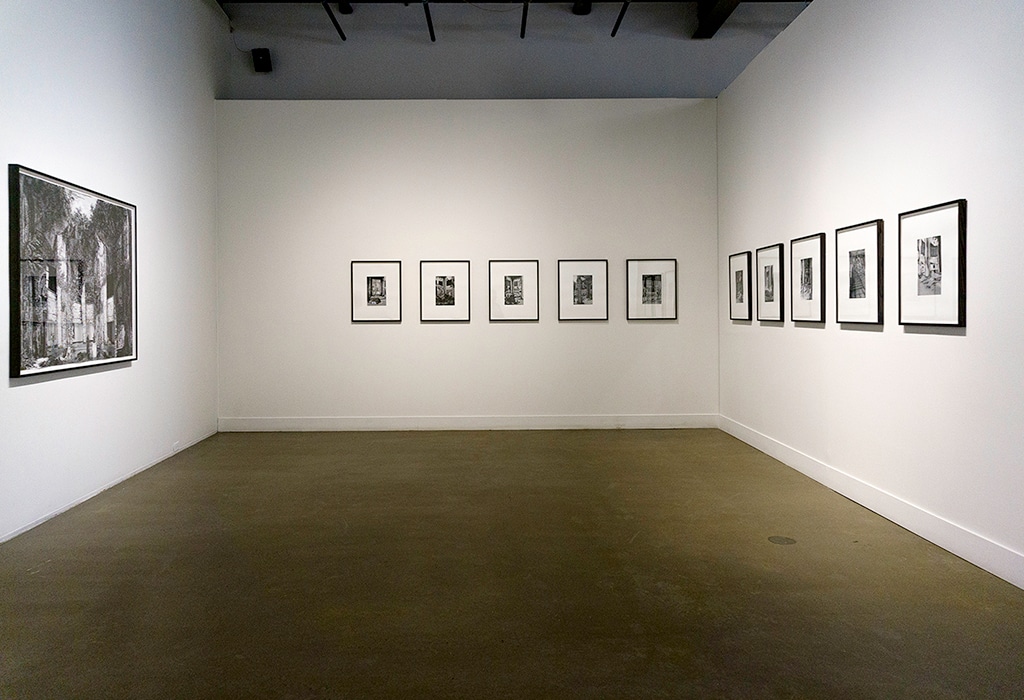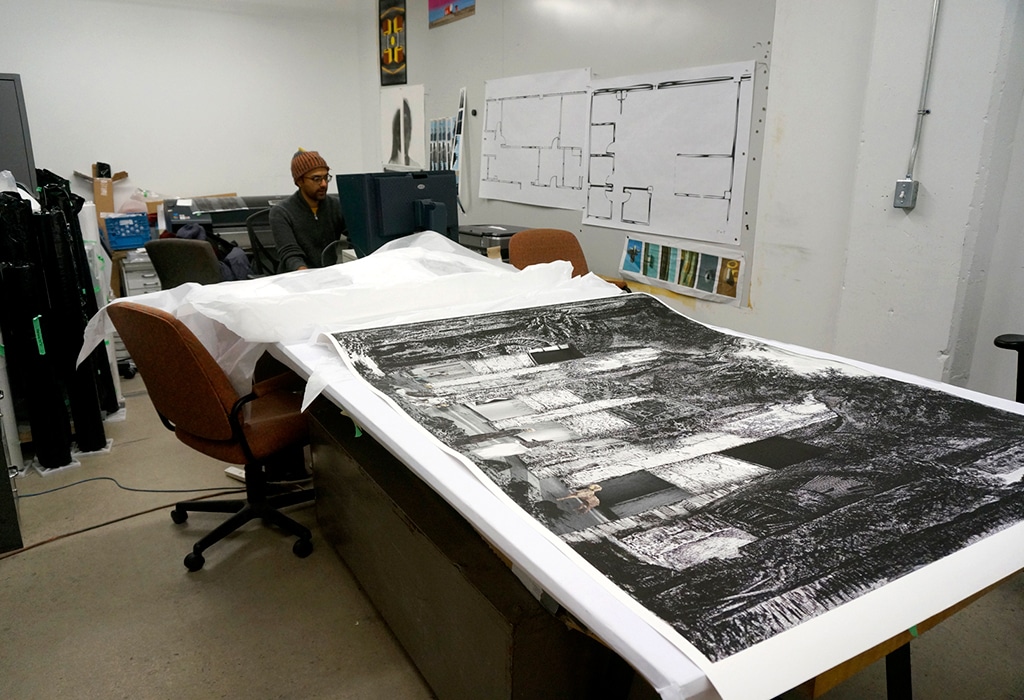Faux Sites
In recent years I have developed a series of large-scale site works. These were created for specific locations and existed for periods of time ranging from three months to two years. The installations are grounded in my interest in examining how our lives are shaped by the politically, socially and culturally dynamic architectural spaces we inhabit and in their disruption and transformation.
Faux Sites was conceived as an extension of these ideas; however, the work takes a very different form. The series has been created by digitally combining photographic documentation of an actual site with drawings that are overlaid and integrated into the form of the work and eventually output on paper. The subject of the first series in this body of work is the museum, for which the foyer of the Montreal Museum of Contemporary Art was used as a representative site. The built environment of the foyer was intriguing to me as its soaring pillars and geometric circles shaped in a quasi-classical modernist manner seems to signal the promise of an uplifting and extraordinary experience. However although the architecture hints at a grandiose spatial experience it has no logic. The space is physically awkward and the trajectory of the pillars leads nowhere. The actual entrance to the museum is sidelined and hard to find. Institutional limitations and failures are manifest in this space.
Inspired by Piranesi’s fantastic etchings of the mid-18th century, Faux Site, Series One imagines the museum, with its classical lineage, as a ruin. A central larger-scaled work Faux Site, Museum (after Piranesi) fuses an actual digital image of a print from Piranesi’s portfolio Views of Rome with a photograph of the museum’s foyer. The original Piranesian etching, Meeting Hall or Entry into various Large Rooms in Hadrian’s Villa, bears a remarkable similarity to the architecture of the contemporary museum. However, in this work the space is occupied with drawn images that include examples of subversive contemporary art (Maurizio Cattelan and Dolores Salcedo), nods to the history of the museum (Alfred Barr – founder of the Museum of Modern Art gazing at a Giacometti sculpture) and elements such as dogs and cats that Piranesi often included in his depiction of classical architectural ruins.
The series continues in a sequence of smaller works. Each merges a photograph of the museum’s foyer with an imagined scenario: a refugee sleeps in the foyer, observed by Buster Keaton who has his eyes covered and is lodged in a TV; a custodian, who is black, and a woman who cleans the space while gazing at idealized sculptures of the white female body as well as an Italian stripper and a Cubist portrait of a woman by Picasso. In other works spectacle overtakes the museum and an interior waterfall plunges from an upper balcony. In one print, Portrait Gallery, the decayed interior contains portraits by Kerry James Marshall (Portrait of Myself as a Shadow) and Maria Lassnig (You or Me). In the latter the artist points a gun at her head and one at the viewer.
The intent of this work is a personal critique of the museum and also a musing both on its power dynamics and the position I have in relation to it as an artist.
Faux Site, Series One is ongoing.
